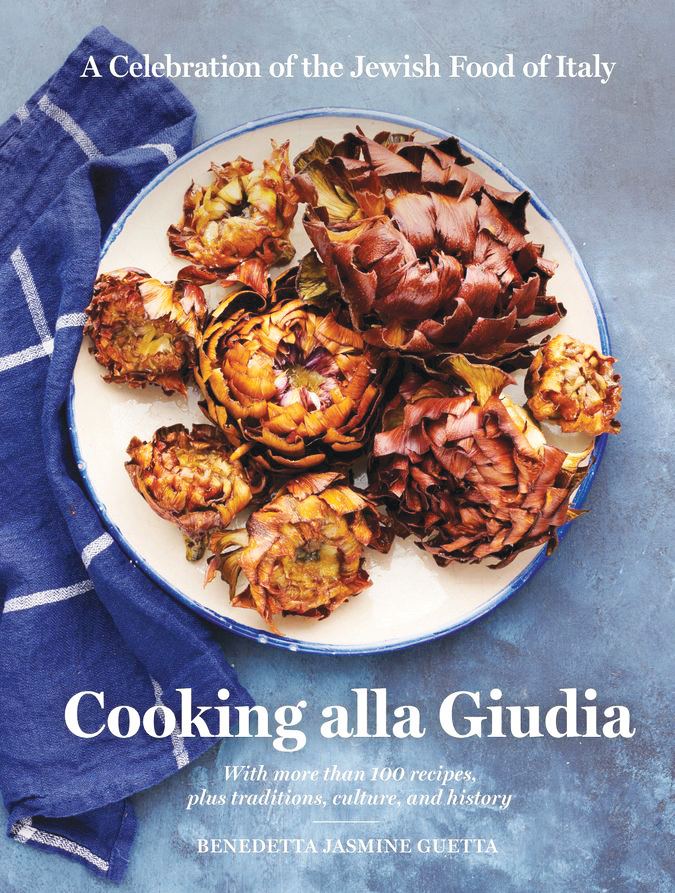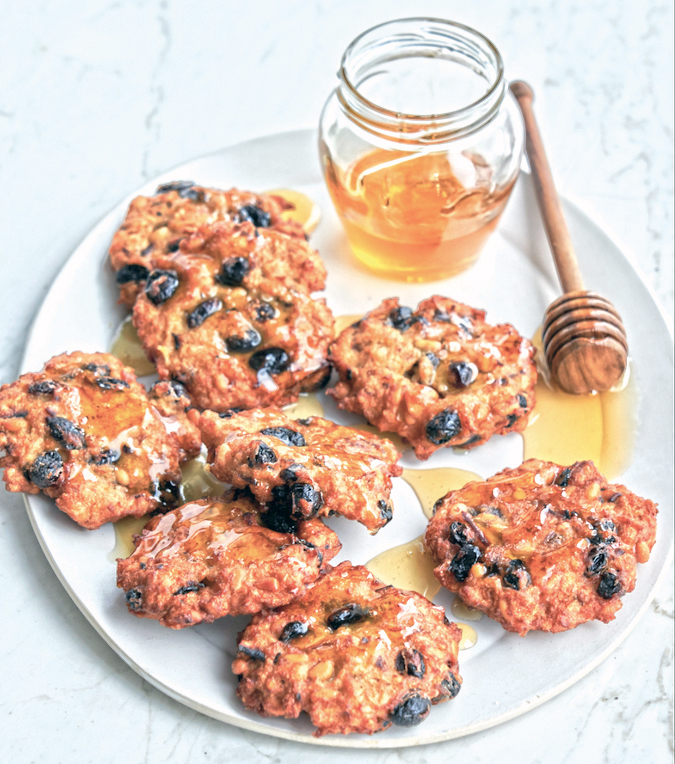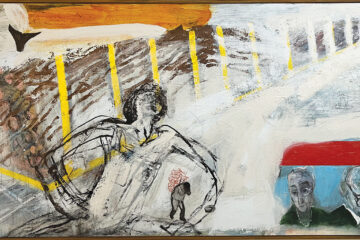Celebrating, documenting Italy’s Jewish cuisine

By Alix Wall, forward.com
To some, orecchiette is just a pasta shape. To Benedetta Jasmine Guetta, it’s infuriating. “The history of orecchiette literally enrages me,” she said of the pasta whose name translates as “little ears.”
Italians tell her the pasta shape comes from the Puglia region, unaware that it originated with the Jews who settled there from the south of France.
“They are called small ears for a reason,” she said. “For which holiday do we eat the ears of the bad guy? Purim!”
Guetta is a woman on a mission. After co-founding Labna, the only kosher Jewish food blog in Italian in 2009, and teaching Jewish cooking classes in Italy, she realized how few Italians knew how much Jews had influenced their beloved cuisine.
To help them learn, she wrote two cookbooks in Italian. Her latest cookbook, and the first in English, is Cooking alla Giudia: A Celebration of the Jewish Food of Italy (Artisan Books).
In addition to well-known Jewish-Roman dishes like fried artichokes, the book has recipes for such lesser-known dishes as prosciutto made from cured goose rather than pork; a Passover dessert in the form of a snake, representing how Moses’ staff turned into a snake to intimidate Pharaoh, and a kosher spaghetti carbonara, substituting zucchini, dried beef or turkey bacon for the pork in the classic dish.
There are numerous Passover dishes, too, with quite a few Passover desserts, including matzah honey fritters (see recipe below), a chocolate mousse cake, and a flourless chocolate cake.
The recipes tell stories of Jewish wandering. One of her favorite recipes, she said, is a Passover almond cake that arrived in the Tuscan port city of Livorno from Portugal, then went to Libya, and then returned when the Jews fled.
“This gives you a sense of how the Jews and Jewish food travel to different places throughout the generations,” she said.
While Roman-Jewish recipes have been well documented both in Italian and English, Guetta said that many lesser-known Jewish-Italian recipes were in danger of being lost. The grandmothers who cook them live in the smaller regions, and their handwritten recipes often include instructions like “knead until it feels right.”
“I wanted to preserve this wealth of recipes from the smaller communities that weren’t written down and are on the verge of disappearing,” she said.
Guetta grew up in Milan. While most Italian Jews say they are neither Ashkenazi or Sephardi, tracing their roots to historical Israel at the time of the Roman conquest, Guetta is among the exceptions: her father is from Libya.
“We observed the holidays,” she said. “We didn’t eat anything not kosher, or meat and milk together, but we didn’t keep separate dishes. Most Italian Jews are pretty secular.”
One reason for the Italian ignorance of Jewish food, she said, is that most Italians don’t know any Jews, or if they do, they are unaware they are Jewish, she said.
“I often get ‘Really?’ as if I was some exotic creature or alien,” she said. Because of her blog, Italians now approach her with all their Jewish questions.
“It’s not like I’m a big guru of being Jewish, but, funnily enough, I’ve found myself representing the Jews unintentionally,” she said.
There are a few of her own family’s recipes in the book, like one of her favorites, a tuna paté, but mostly she presents other people’s recipes.
“I wanted to give the flavor of what you might currently eat in an Italian-Jewish house,” she said.
Guetta now lives in Los Angeles, where she moved to be with her Israeli-American partner. She runs Café Lovi, a small cafe in Santa Monica specializing in sandwiches on challah, her favorite bread.
Guetta points out the Jewish influence on Italian cuisine does not stop with orecchiette. In fact, many well-known Italian dishes were somehow influenced by the Jews.
“In the 19th century, Italians thought eggplant might be poisonous,” she said. “Jews in Spain had learned how to cook with it from their Arab neighbors.”
The influence worked in both directions, she said. Different popes came up with arcane prohibitions to make life for the Jews harder.
One pope ruled that the Jews can only eat small fish like sardines and anchovies, which led to the invention of the famous aliciotti con l’indivia.
“The Jews then came up with yummy dishes that are now considered specialties,” said Guetta “It drives me nuts that no one knows these stories.”
Honey Matzah Fritters
One of the best culinary inventions from the women of the Roman Ghetto are pizzarelle, small, sweet matzah fritters soaked in honey. These treats can be found in bakeries year-round. I know it might be difficult to believe that anybody would want to eat matzah when it’s not Passover, but give pizzarelle a try, and you’ll instantly be converted into a matzah lover. Makes 30 fritters.
6 matzah sheets
3 large eggs
6 Tbsp. sugar
2⁄3 cup (raisins, soaked in hot water until plumped and drained
½ cup pine nuts
1 Tbsp. grated orange or lemon zest
Up to 3 Tbsp. matzah meal
Sunflower or peanut oil for deep-frying
1⁄3 cup honey (see note)
Break the matzah sheets in half, place them in a bowl filled with water, and weigh them down with a plate to keep them submerged. Soak for two hours, then drain the matzah and squeeze them to remove all the water.
Transfer the matzah to a large bowl and mash with a potato masher to make a thick and somewhat chunky paste or batter. Mix in the eggs, sugar, raisins, pine nuts, and orange or lemon zest. Stir in some or all of the matzah meal: you are looking to obtain a thick batter that will keep its shape when dropped by the spoonful into the hot oil for frying. It should not look too wet and runny.
Pour 1½ to 2 inches of oil into a large saucepan and heat over medium heat until a deep-fry thermometer reads 350 degrees. You can test the oil by dropping a small piece of food, such as a slice of apple, into it: if it sizzles nicely but doesn’t bubble up too wildly, the oil is ready. (An apple is said to help minimize the smell of the frying oil, so I generally go for that, but any bit of food will do.)
Working in batches to avoid crowding, using two spoons, drop small mounds of the matzah mixture into the hot oil and fry the fritters for five minutes, or until golden brown, turning them once to ensure even cooking. Drain the cooked fritters on paper towels for a few minutes, then transfer to a plate and drizzle with the honey before serving.
Pizzarelle have to be eaten as soon as they are ready: they are scrumptious hot from the pan, but they get soggy quickly.
Note: If the honey is very thick, heat it up in a small saucepan with three tablespoons of water and a squeeze of fresh lemon juice to liquefy it before drizzling it over the pizzarelle.
Variation: For a chocolate version of pizzarelle, omit the matzah meal and add two tablespoons of unsweetened cocoa powder. Keep in mind, though, that while pizzarelle made with cocoa are delicious, the color is unappealing.
The JCC Cultural Arts & Book Series presents appetizers, salads, and desserts from Cooking Alla Giudia, with a livestream conversation featuring Benedetta Guetta at 6 p.m., Thursday, March 7 at Beth Abraham Synagogue, 305 Sugar Camp Cir., Oakwood. $18. Register here.
To read the complete March 2024 Dayton Jewish Observer, click here.







